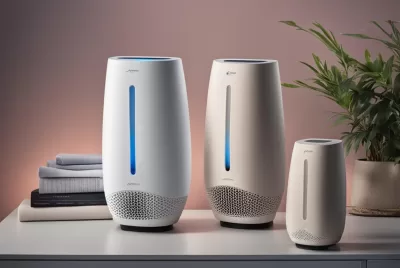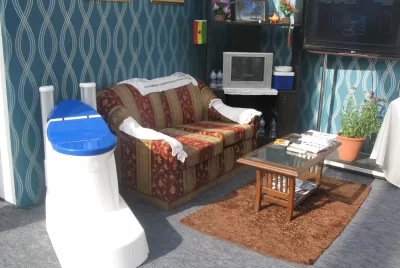Are Air Purifiers Safe
"We may earn a commission for purchases made using our links. Please see our disclosure to learn more."
Air Purifiers Safety
Are you wondering about the safety of air purifiers?
You’ll be pleased to know that when utilized correctly, air purifiers can be a safe and effective addition to your home. However, it’s crucial to stay informed about the potential hazards of certain types[1][2].
Specifically, you should steer clear of ozone-generating air purifiers and electronic air cleaners like ionizers, as they can release dangerous ozone and pollutants, compromising indoor air quality[2][4][5].
Instead, opt for air purifiers equipped with High Efficiency Particulate Air (HEPA) filters. Not only are they free from ozone emissions, but they excel in eliminating particulate matter from the air, offering you a healthier living environment[2][3].
Rest assured, most air purifiers pose no threat to babies, provided you adhere to safety guidelines[3]. Dive deeper and make an informed choice for your family’s well-being.
References:
[1] Healthline – Do Air Purifiers Work?
[2] UMass EHS – Air Purifiers Fact Sheet
[3] WebMD – Are Air Purifiers Safe for Babies?
[4] Purifan – Is Your Air Purifier Safe?
[5] California ARB – Hazardous Ozone-Generating Air Purifiers
[6] Phys.org – Research Uncovers Safety of Air Purifiers”
Are Air Purifiers Potentially Harmful to Your Health? A Closer Look
Air purifiers promise a cleaner and healthier indoor atmosphere, yet they are not without potential health risks. As someone striving to enhance the air quality in your home, it’s vital to be aware of these potential drawbacks. Below, we break down the health risks you might encounter:
- Certain air purifiers may initiate symptoms such as headaches, sore throats, coughs, asthma flare-ups, or breathing difficulties.
- For individuals grappling with lung conditions, unchecked air pollutants can exacerbate existing issues, deteriorating lung health further.
- Be wary of air cleaning technologies marketed as COVID-19 combatants, as some might be ineffective and bring about unintended health repercussions.
- Electronic air cleaners, notably ionizers, are capable of releasing ozone gas and other harmful pollutants, posing a significant health risk.
- Ozone-producing air purifiers fall short in effectively purifying the air and the released ozone is categorized as hazardous.
- A segment of air purifiers has the propensity to generate additional toxic pollutants, including formaldehyde and ultrafine particles.
- Ozone levels, even below health standards, often fall short in neutralizing numerous odor-causing chemicals.
- The scientific community harbors concerns that electronic air cleaners may unleash ozone gas and other pollutants, potentially detrimental to health.
Note that this guide doesn’t delve into the aspects of gaseous pollutants and radon and its progeny removal.
Therefore, to safeguard your home environment, investing in air purifiers equipped with High Efficiency Particulate Air (HEPA) filters is your safest bet[3]. Make sure to carefully select and operate the purifier to avert potential health hazards.
Identifying the Key Pollutants Eradicated by Air Purifiers: A Guide
In your quest for cleaner air, understanding the capabilities of various air purifiers is essential. Here’s a rundown of the pollutants you can expect these devices to eliminate:
- Air purifiers boasting HEPA technology excel in eradicating up to 99.7% of circulating airborne particulate matter (PM) within your home.
- A majority of air purifiers adeptly remove biological contaminants including pollen, dust, mold spores, pet dander, and smoke.
- Trust in HEPA filters to cleanse 99% of biological pollutants from your indoor air, offering a breath of fresh air.
- HEPA air purifiers stand as a powerful defense against biological aerosols in indoor settings, fostering a healthier living space.
- Employ air purifiers with activated carbon filters to absorb and quarantine harmful gases effectively.
- Remember, activated carbon remains the unrivaled filter type capable of absorbing hazardous gases, safeguarding your home environment.
- Ozone-generating air purifiers are less proficient in chemical pollutant removal, with ozone inhalation posing substantial health risks for humans and pets alike.
As you navigate your choices, remember that air purifiers have the prowess to eliminate a broad spectrum of pollutants, from particulate matter to biological contaminants and harmful gases. Choosing the right purifier and using it responsibly can shield you from potential health risks and cultivate a healthier indoor environment.

Which Air Pollutants Prove Too Stubborn for Air Purifiers to Remove?
While air purifiers tirelessly work to cleanse your indoor air, some pesky pollutants prove too stubborn to eliminate. Delve into the detailed list of harmful air pollutants that typically escape the grasp of air purifiers:
- For individuals with lung ailments, unchecked air pollutants can inflict further damage to the lungs[1].
- While dormant, asbestos poses no threat; however, once airborne, it transforms into a hazard to human health[2].
- Keep an eye out for formaldehyde, a prevalent indoor air pollutant, known to irritate the eyes, nose, and throat, and has potential carcinogenic properties[2].
- Unfortunately, evicting formaldehyde from your home is beyond the capacity of most air purifiers[2].
- Alarmingly, certain air purifiers might generate additional hazardous pollutants, including formaldehyde and ultrafine particles[6].
- Despite efforts to trap gases in charcoal-based filters, the effectiveness of these systems remains under-questioned due to limited independent data[6].
- Household filters collecting particles can ironically become hubs for unpleasant toxins like heavy metals from brake wear, compounds from wood and coal fires, and nitrosamines – all culled from outdoor air[6].
Therefore, equip yourself with knowledge about the limitations of air purifiers and embrace supplementary measures to minimize exposure to these air pollutants. Boosting home ventilation and steering clear of products releasing harmful chemicals stand as prudent steps.
How Can You Shield Yourself from Harmful Air Pollutants Effectively?
Embark on a journey to cultivate a healthier living space with these actionable steps to reduce your exposure to harmful air pollutants:
- Retreat indoors during high pollution days, minimizing the influx of outdoor air into your living space[1][4].
- Stay informed with daily air pollution forecasts in your locality, preparing yourself for unhealthy air days[2][5].
- Swap indoor exercises for outdoor workouts when pollution peaks[2].
- Embrace energy conservation within your home to lessen air pollution[2][3][5].
- Forgo the burning of wood or trash, significant contributors to particle pollution in several regions[2].
- Opt for hand-powered or electric lawn care tools over their gasoline-powered counterparts[2].
- Foster good health through a nutritious diet, regular exercise, smoke-free living, and managing health conditions[3].
- Enhance air quality while saving energy by timely replacing filters in air conditioners and purifiers[3].
- Adjust your activity levels to remain low during anticipated high ozone periods[4][5].
- Favor the use of eco-friendly paints and cleaning supplies[5].
- Implement mulching or composting techniques for managing leaves and yard waste[5].
- Consider the adoption of gas logs as a wood substitute[5].
- Spearhead efforts to curb toxic emissions from industrial outlets[6].
- Champion stringent emission norms and cleaner gasoline to reduce vehicular and engine emissions[6].
- Engage in voluntary programs to address and mitigate indoor air pollution[6].
By adopting these strategies, you empower yourself to minimize exposure to harmful air pollutants, fostering a journey towards improved health and well-being.
Citations:
[1] NCBI – Air Pollution and Lung Damage
[2] Lung.org – Tips to Protect Yourself from Outdoor Air Pollution
[3] Harvard Health Blog – How to Reduce Harm from Air Pollution
[4] AirNow – AQI Basics and High Levels of PM2.5
[5] EPA Region 1 – Ways to Reduce Pollution
[6] EPA – Reducing Emissions of Hazardous Air Pollutants




